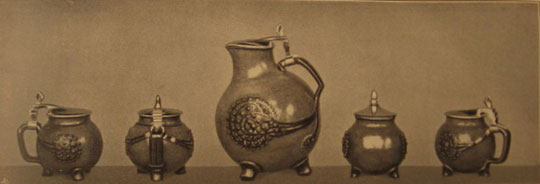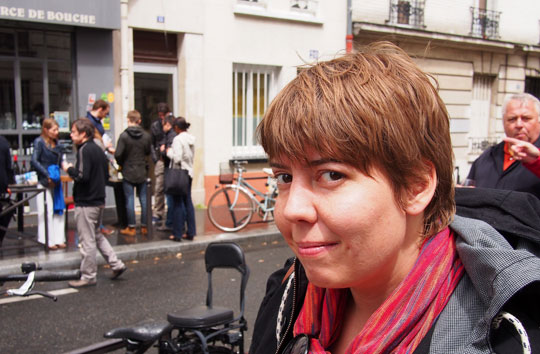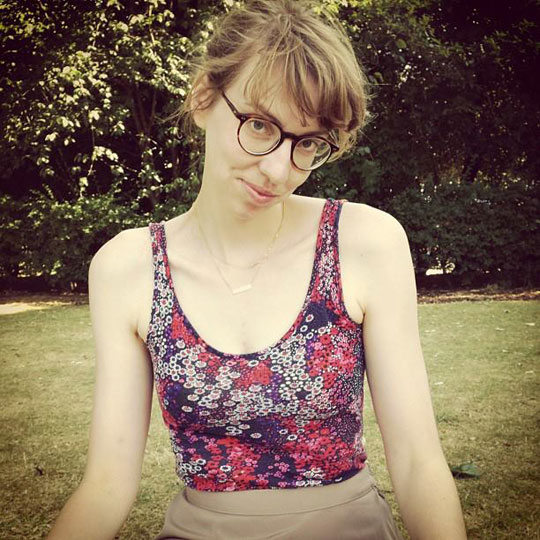ADHT is excited to introduce our new postdoctoral fellows, whose unique perspectives, rich experiences, and diversity of academic interests and pursuits will bring fresh, stimulating conversations to our classrooms and community.
Jessica Lynn Fripp
My research explores the intersection of visual culture and sociability in eighteenth-century France. I’m particularly interested in the social role of objects, and how they are used in the creation and maintenance of friendship and other personal relationships. I received my MA in art history from Williams College in 2005 and my PhD in art history from the University of Michigan in 2012. I’ve taught at Williams College, the University of Michigan—both in Ann Arbor and for UM’s Art in Paris program—and the Catholic University of America. I’ve also worked in the education departments in a range of museums, including the Museum of Contemporary Art San Diego, the Williams College Museum of Art and the National Gallery of Art.
What are you most looking forward to about your time here at Parsons?
I’m excited to work with a student body that is interested in history, theory, and practice. And with my background in museum education, I love teaching in front of objects, so I’m very much looking forward to taking advantage of all the art New York City has to offer and getting my students in the galleries.
What current exhibitions, books, or happenings would you recommend to students and colleagues?
I’m looking forward to the Met’s “Artists and Amateurs: Etching in Eighteenth-Century France,” and “The Fashion World of Jean Paul Gaultier: From the Sidewalk to the Catwalk” at the Brooklyn Museum of Art, both of which open in October.
Please share some information about your recent, current, and upcoming projects and research.
While at Parsons, I’ll be working on my book based on my PhD work, which examines the roles that portraits of artists played in the social commerce of friendship. I look at a diverse body of portraits —from small medallion drawings and caricatures to hybrid genre-portraits—to demonstrate that different types of friendship affected the formats, iconographies, and media of portraits and how and where they circulated. I’ve also just completed an edited volume on a similar topic, Artistes, savants et amateurs: art et sociabilité au XVIIIe siècle (1715-1815) of essays based on selected papers given at an interdisciplinary conference, “Art et Sociabilité au XVIIIe siècle,” that I co-organized in 2011.
I’m also starting a new project that focuses on the interaction between artists and naturalists that produced illustrated works and objects for the first veterinary schools, which were founded in the eighteenth century.
Freyja Hartzell
 Richard Riemerschmid, Beer Service, Stoneware, 1903.
Richard Riemerschmid, Beer Service, Stoneware, 1903.
Freyja Hartzell holds a PhD in the History of Art from Yale University, an MA from the Bard Graduate Center: Decorative Arts, Design History, Material Culture, and a BA in Art from Grinnell College. She has published articles on topics including the material and symbolic significance of wood in medieval and modern Germany; velvet as metaphor in nineteenth-century French fashion and interiors; early twentieth-century German stoneware ceramics as cultural agents; and the theatrical, magical qualities of Karl Friedrich Schinkel’s interior architecture and Biedermeier objects in nineteenth-century Berlin. Her current book project examines the ways in which Munich designer Richard Riemerschmid’s interiors, housewares, and clothing force a reconception of the history of modern design.
What are you most looking forward to about your time here at Parsons?
I’ve been teaching part-time in at the Cooper-Hewitt MA Program for several years, so while I’m definitely looking forward to continuing my work with the grad students, I’m also excited to get to know the undergraduates at Parsons. I’ve loved the diversity I’ve encountered in the School of Art and Design History and Theory so far, and can’t wait to meet more of its artists, designers, curators, historians, and critics in training. I’m especially interested in how objects can tell stories – in fact, that’s central to the way I teach. This fall I’m offering a new course called “Tales of Seduction” that will allow students to delve deeper into the meanings of designed objects and interior architecture by studying them through the lens of period fiction.
What current exhibitions, books, or happenings would you recommend to students and colleagues?
If you’re in New York, you should definitely get yourself to the Neue Galerie’s current exhibition of early 20th-century objects by Austrian designer Koloman Moser – and have an Austrian coffee and apple strudel while you’re at it!
Please share some information about your recent, current, and upcoming projects and research.
I’m currently pursuing a book project on the German architect-designer Richard Riemerschmid (1868-1957). It will be the first book on this important German artist available in English, but it’s really about the ways in which Riemerschmid’s work shows us a different kind of European modernism than most of us are generally familiar with – for instance, I’m interested in the way that history seems to creep into Riemerschmid’s self-consciously modern designs, and the way in which regional or vernacular craft influences his work. I’ve become more and more curious about the links between past and present in German art and design, and am hoping to begin work soon on a collaborative project that will explore the cultural significance of wood for both modern and medieval Germany. Finally, I’m looking forward to starting new research on the concept of “transparency” in art, architecture, and design of the 19th and 20th centuries – a project I’m calling “The Emperor’s New Clothes”! I want to investigate the international fascination with glass in visual and material culture, beginning with its public manifestations, including London’s Crystal Palace of 1851, late nineteenth-century steel-and-glass department stores, and 1920s display windows, and culminating with its more private incarnations in domestic architecture and household objects dating from the post-World War II era. I’m curious to find out whether the intentional “emptiness” of transparent objects and spaces represented the liberating possibility for expanded individuality in modern life, or whether this same blankness quite literally exposed the modern individual to attacks on her privacy, identity, and freedom.
Rachel Lifter
Rachel Lifter holds a PhD from London College of Fashion, University of the Arts London. In her doctoral research she explored the importance of youth culture and its ideologies to British popular fashion through an examination of contemporary indie – a youth cultural formation that is thoroughly integrated into “mainstream” fashion culture in the UK. She also edited and introduced Working Papers in Fashion Studies (2010, co-edited with Ane Lynge-Jorlén) and Working Papers in Fashion Studies 2 (2012), both published by London College of Fashion. These publications, which consisted of articles by doctoral research students at London College of Fashion, attempted to contribute to the wider discussion among scholars of fashion concerning both the definition and exploration of the interdisciplinary field of fashion studies. Dr. Lifter also taught courses in cultural studies and sociology in the Cultural and Historical Studies departments at London College of Fashion and Central Saint Martins before joining the faculty at Parsons in the fall, 2013.
What are you most looking forward to about your time here at Parsons?
I am thrilled to have the opportunity to pursue my research interests at Parsons and, more specifically, within the MA Fashion Studies program. In my doctoral research I explored how the legacy of youth culture looms large within contemporary British popular culture, informing the way in which fashion is represented within texts and images, practiced through dress and produced through the labor of those working in the industry. I am eager to extend this research to New York City, exploring the concepts and themes that inform how fashion is realized through images, practices and forms of labor in New York. Moreover, I look forward to engaging in dialogue and debate with colleagues and students at Parsons regarding what shape the newly emergent field of fashion studies will take in the future. It seems that this field gains more and more traction every day, and I am excited that the MA Fashion Studies creates an interdisciplinary space from which to contribute to this discussion.
What current exhibitions, books, or happenings would you recommend to students and colleagues?
I have developed my autumn elective course – Fashion and the Body – from a cultural studies perspective, drawing on feminist, post-colonial and queer theory to analyze the relationship between fashion and the body. With this in mind, I look forward to the Queer Style symposium that will be held at FIT in November as an opportunity to expand my understanding of the way in which we can apply the theoretical apparatuses of queer theory to fashion as an object of research. Moreover, over the past couple years, there seems to have been an explosion of in-depth research on fashion, focusing on a range of contemporary and historical themes. I recently read and greatly enjoyed Thuy Linh Tu’s (2010) The Beautiful Generation, and two titles that are on my current list of ‘must read’ books are Ashley Mears’ (2011) Pricing Beauty and Caroline Evans’ (2013) The Mechanical Smile. I am excited to see what other sociological, anthropological, historical, material culture and cultural studies research will come out on fashion in the coming years, and I hope that I can contribute to this body of research a monograph based on my own doctoral research.
Please share some information about your recent, current, and upcoming projects and research.
I completed my PhD at London College of Fashion, University of the Arts London in 2012. My doctoral research explored contemporary indie in the UK – a youth cultural formation that existed outside of the “mainstream” in the 1980s, but since then has integrated into it. Drawing on the work of Michel Foucault and Pierre Bourdieu, I explored how discourses emerging from the fields of popular music and popular fashion constitute contemporary indie as a space in which “mainstream” youth cultural identities are produced – identities that are then performed by young men and women through their own “practices of the self”. Exploring indie as located within wider fields of cultural production revealed new knowledge not only about the location and experience of contemporary youth culture, but about the value systems of those wider fields, as well. Thus, the research also presented a historicized account of the contemporary field of popular fashion in the UK, and it examined in depth the cultural practices of secondhand retailers and stylists – two emergent fashion professions that celebrate associations with youth and alternative cultures.
This research led to a book chapter that I developed for the second edition of Fashion Cultures (edited by Stella Bruzzi and Pamela Church Gibson, forthcoming, 2013), which analyzed representations of indie to draw attention to the increasing importance of the notion of “style” within British popular fashion. I am also in the process of developing three other scholarly articles from my doctoral research on the following themes: an exploration of the fashioning of indie masculinity; a genealogy of “style”; and, finally, an examination of “alternative” forms of cultural production and mediation within the contemporary fashion industry. And, of course, I would love to develop a monograph from my doctoral work, as well.
My other research interests have to do with feminist theory and contemporary debates around post-feminism. As will become clear to those students enrolled on Fashion and the Body, I greatly enjoy analyzing fashion media, films, reality television and popular music through feminist concepts and theories, and I hope that in my future research I will be able to explore these interests in greater depth.
Virginia Solomon
Virginia Solomon specializes in modern and contemporary art, culture, and politics. Her dissertation, ‘Modeling Subcultural Politics: General Idea, Sexuality, and Signification, 1969-1994,’ considers the work of Canadian artist group General Idea, arguing that its practice presents a theory of subcultural politics distinct from traditional forms of opposition. Other interests include feminist theory, cultural studies, and visual studies. Solomon was a Helena Rubinstein Fellow at the Whitney Independent Study Program for the 2007/2008 academic year. She was a 2009/2010 Canadian Art Research Fellow at the National Gallery of Canada, and the 2010/2011 Whitney-Lauder Curatorial Fellow at the Institute of Contemporary Art in Philadelphia. She graduated from Stanford University in 2004 with a B.A. in studio art and feminist studies, and from the University of California with a Ph.D. in art history in 2013. In addition to publishing various essays on the topic, she has also curated a number of exhibitions exploring alternative forms of politics.
What are you most looking forward to about your time here at Parsons?
I am looking forward to being a part of a community committed to cultural practice as a site for the realization of social justice. I also look forward to the myriad opportunities for interdisciplinary teaching and learning that take place at the New School on a daily basis!
What current exhibitions, books, or happenings would you recommend to students and colleagues?
Although it isn’t brand new, Jack Halberstam’s fabulous book, Gaga Feminism: Sex, Gender, and the End of Normal offers a timely revisitation of feminism through masterful readings of a variety of popular culture phenomena. The interweaving of pop culture, cultural theory, and a legacy of political impact across cultural and political strata that Halberstam presents has been exceptionally influential on my work.
Please share some information about your recent, current, and upcoming projects and research.
My next project investigates queer abstraction, considering how abstract work can materialize queer modes of being and of politics without representing them directly.





























